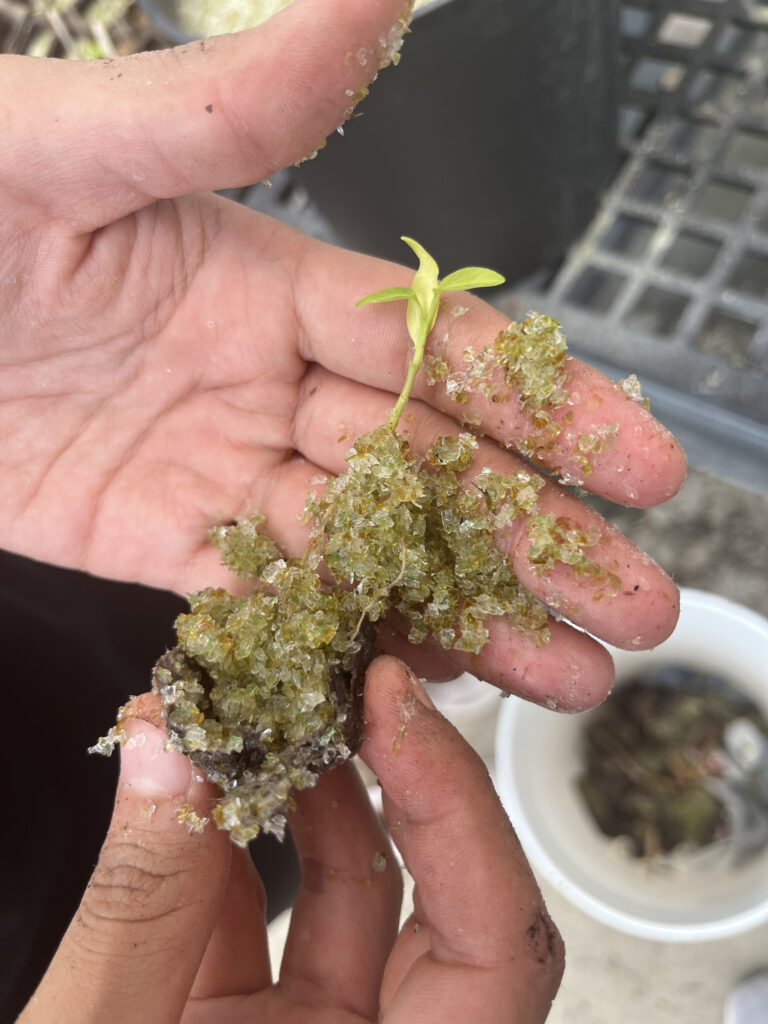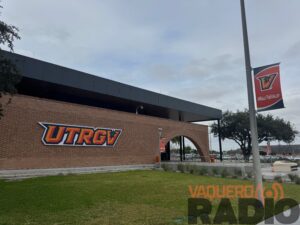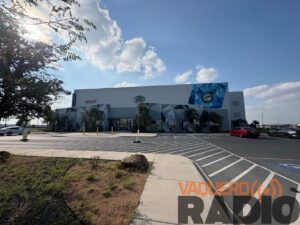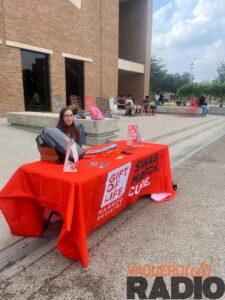
Photo Courtesy/Andrea Quezada
UTRGV researchers are making progress in their recycled glass projects that aim to mitigate agricultural and coastal erosion in hopes that their efforts will reduce the impact of climate change.
The university is conducting two separate projects using recycled glass: one at South Padre Island and the other on the Edinburg campus.
Coastal Studies Lab Director David Hicks said he started his research based on his interest in using recycled glass to help renourish local beaches.
Hicks explained barrier islands are not getting the proper nourishment from sediments coming out from rivers because of how dammed they are.
“So, as a result, you know, you don’t have the material coming onto the beaches,” he said. “The processes that move the sand on the island continue, but they just continue without new sand coming in, and that causes the whole island to kind of erode and migrate towards the mainland.”
A 125-gallon tank with the glass sand is being used to simulate a natural beach to test the research on a smaller scale. There is a plunger in the tank that plunges into the water to generate waves.
According to Hicks, organisms, such as mole crabs and coquina clams, are being kept in the tank and seem to be responding well to the glass sand.
Hicks said if the glass sand ever gets to the point of being deployed, it would be mixed with natural sand and would take up a small fraction on the beaches.
The second project taking place at the UTRGV Edinburg campus involves researchers mixing recycled glass in soil to grow plants.
Teresa Patricia Feria is the associate dean for Faculty Success and a professor at the School of Integrative Biological and Chemical Sciences. Feria said the project is still in its pilot stage.
She added because wind forces are taking away good soil particles, this leaves a lack of nutrient-rich soil.
“[How can we] compensate that lack of soil,” she said. “We are doing that in this pilot with mixing the recycling glass and the soil. So, in areas where we have poor soils, or low soil densities, we can substitute.”
Cilantro, jalapeños and green peppers are being grown in the glass soil and are being tested to see if the taste and nutrients remain the same.
Physics and astronomy Assistant Professor Julie Vanegas said the smell of the cilantro is “exactly the same.”
Feria highlighted the participation of students in this project is essential.
“Know that the core value of the university is student success,” she said. “They’re being very successful because they are also the ones that are in the lab, right, and taking care of the plants. And with Dr. Hicks, the next generation of scientists that are working with us [are also] participating with us in the lab.”
This is Victoria Gonzalez for Vaquero Radio.



